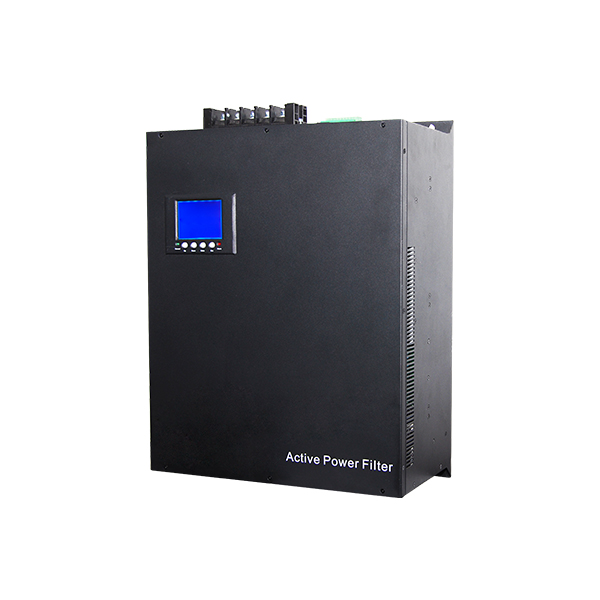Active Power Filter / APF
The Wt-APF (Active Power Filter), also known as APF or AHF, represents an innovative power electronic device designed for dynamic suppression of harmonics and compensation of reactive power. Its operation involves utilizing current for load current detection, extracting harmonic components in the load current through internal GSP (Generalized Synchronous Reference) calculation. Subsequently, it controls the inverter to produce a harmonic current that matches the load harmonic current but in the opposite direction. This is achieved by driving Insulated Gate Bipolar Transistors (IGBTs) to inject this harmonic current into the power grid, effectively achieving harmonic filtering.
- Cooling methodSmart air cooling
- Noise <70dB
- Working frequency50/60HZ +-5HZ
- Operating frequency21.6KHZ
Features of Active Power Filter
Here are some typical characteristics:- Harmonic Compensation: Active Power Filters are designed to mitigate harmonic distortions in electrical systems, especially those caused by non-linear loads.
- Real-time Monitoring: APFs often incorporate real-time monitoring of electrical parameters such as current, voltage, and power factor. This information is crucial for the control system to generate appropriate compensating currents.
- Power Factor Correction: Many APFs offer power factor correction by compensating for reactive power. Morever, this helps improve the system's overall power factor.
- Adaptive Control Algorithms: Advanced APFs may use adaptive control algorithms that adjust their operation based on changing system conditions, ensuring optimal performance.
- Fast Response Time: APFs are known for their quick response times, allowing them to quickly adapt to changes in the electrical system and provide effective compensation.
- Modularity: Some APFs are designed with modularity in mind, also allowing for easy scalability based on the application's specific needs.
- Efficiency: Efficient operation is a key feature, as APFs aim to provide compensation with minimal losses in the system.
- Communication Interfaces: Integration with communication interfaces such as Modbus or Ethernet may be included, enabling easy monitoring, control, and communication with other devices in the power system.
Applications: Active Power Filter
Here are some common uses of Active Power Filters:- Harmonic Mitigation: The primary purpose of APFs is to mitigate harmonic distortions in electrical systems. They also eliminate or reduce harmonic currents and voltages generated by non-linear loads such as variable speed drives, rectifiers, and other power electronics.
- Power Factor Correction: APFs can improve power factor by compensating for reactive power in the system. This is particularly important in industrial settings where poor power factors can lead to increased energy consumption and reduced system efficiency.
- Commercial and Industrial Facilities: APFs find applications in various commercial and industrial facilities where non-linear loads are prevalent. Examples include manufacturing plants, data centres, and facilities with a high concentration of electronic equipment.
- Renewable Energy Integration: In renewable energy systems, such as wind farms and solar power plants, APFs may enhance power quality and grid integration. They can help mitigate issues related to the intermittent nature of renewable energy sources.
- Sensitive Electronic Equipment Protection: Facilities with sensitive electronic equipment, such as hospitals, research laboratories, and telecommunications centres, use APFs to ensure a clean and stable power supply, also reducing the risk of equipment malfunctions due to harmonic distortions.
